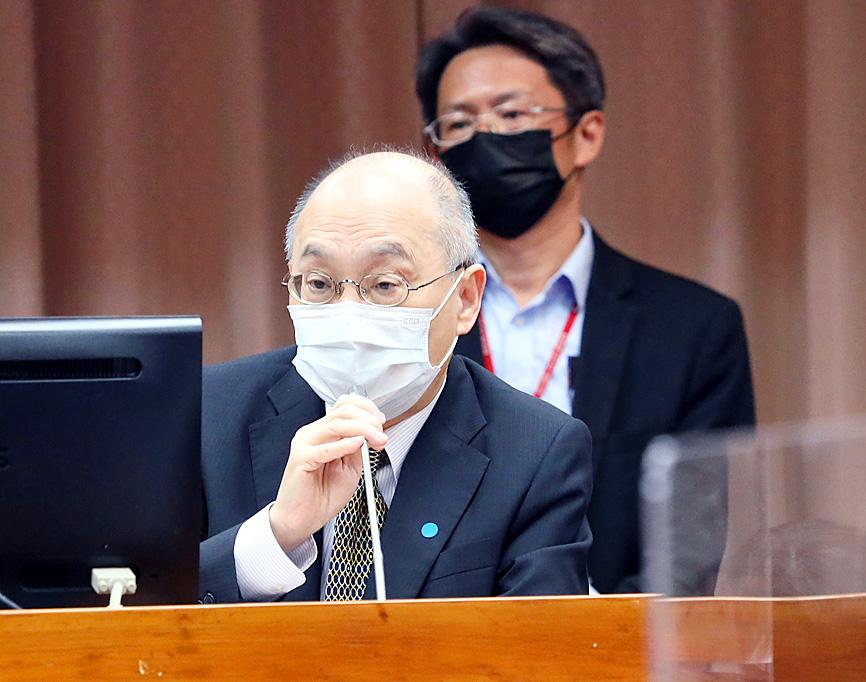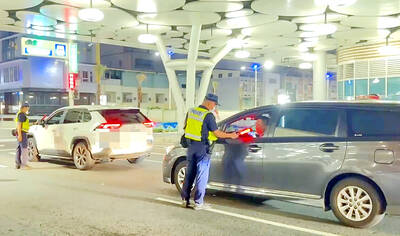National Palace Museum director Wu Mi-cha (吳密察) yesterday said that he does not know an ideal location to store historical artifacts on the museum’s collection if a war broke out in Taiwan, but pledged to stipulate an evacuation plan within three months and hold a drill in July.
Wu attended a meeting at the Legislature’s Education and Culture Committee to brief lawmakers about the museum’s operations.
However, many lawmakers were concerned whether the museum has the personnel and protocols in place to move nearly 700,000 historical artifacts to a safe location in the event of a war, after seeing museum staff in Ukraine struggle to salvage historical objects following the Russian invasion.

Photo: CNA
Democratic Progressive Party Legislator Huang Kuo-shu (黃國書) and Chinese Nationalist Party (KMT) Legislator Wan Mei-ling (萬美玲) asked whether the museum has selected locations to store historical artifacts, considering that staff at the Andrey Sheptytsky National Museum of Lviv, Ukraine, are having problems finding a place to store nearly 12,000 historical objects that they removed from the museum.
Wan said that the National Palace Museum needs to be prepared to evacuate historical objects in an emergency situation, adding that it would be too late if the museum waits until then to react.
Wu said the rules governing a disaster and emergency response plan at the National Palace Museum mainly prepare the staff to respond to a flood, fire or an earthquake.
While the museum has been holding drills for various emergency situations, it has yet to hold drills for a war or airstrike, he said.
“The National Palace Museum has more than 690,000 historical objects. If we were to hold a drill for a scenario of a war or an air raid, we would need to first divide the objects into different categories, simulate the packaging of these objects and safely move them to designated locations. This is no small matter,” he added.
“Evacuating historical objects is much more complicated than evacuating people, and frankly I cannot think of any place to store them at the moment. National security officials might know some very safe locations, but we do not know whether those locations can safely preserve historical objects as we do at the National Palace Museum,” Wu said.
Wu pledged to spend the next three months establishing a wartime response task force and consulting national security officials about possible storage locations for historical artifacts.

TRAFFIC SAFETY RULES: A positive result in a drug test would result in a two-year license suspension for the driver and vehicle, and a fine of up to NT$180,000 The Ministry of Transportation and Communications is to authorize police to conduct roadside saliva tests by the end of the year to deter people from driving while under the influence of narcotics, it said yesterday. The ministry last month unveiled a draft of amended regulations governing traffic safety rules and penalties, which included provisions empowering police to conduct mandatory saliva tests on drivers. While currently rules authorize police to use oral fluid testing kits for signs of drug use, they do not establish penalties for noncompliance or operating procedures for officers to follow, the ministry said. The proposed changes to the regulations require

The Executive Yuan yesterday announced that registration for a one-time universal NT$10,000 cash handout to help people in Taiwan survive US tariffs and inflation would start on Nov. 5, with payouts available as early as Nov. 12. Who is eligible for the handout? Registered Taiwanese nationals are eligible, including those born in Taiwan before April 30 next year with a birth certificate. Non-registered nationals with residence permits, foreign permanent residents and foreign spouses of Taiwanese citizens with residence permits also qualify for the handouts. For people who meet the eligibility requirements, but passed away between yesterday and April 30 next year, surviving family members

China Airlines Ltd (CAL) yesterday morning joined SkyTeam’s Aviation Challenge for the fourth time, operating a demonstration flight for “net zero carbon emissions” from Taiwan Taoyuan International Airport to Bangkok. The flight used sustainable aviation fuel (SAF) at a ratio of up to 40 percent, the highest proportion CAL has achieved to date, the nation’s largest carrier said. Since April, SAF has become available to Taiwanese international carriers at Taipei International Airport (Songshan airport), Kaohsiung International Airport and Taoyuan airport. In previous challenges, CAL operated “net zero carbon emission flights” to Singapore and Japan. At a ceremony at Taoyuan airport, China Airlines chief sustainability

‘ONE CHINA’: A statement that Berlin decides its own China policy did not seem to sit well with Beijing, which offered only one meeting with the German official German Minister for Foreign Affairs Johann Wadephul’s trip to China has been canceled, a spokesperson for his ministry said yesterday, amid rising tensions between the two nations, including over Taiwan. Wadephul had planned to address Chinese curbs on rare earths during his visit, but his comments about Berlin deciding on the “design” of its “one China” policy ahead of the trip appear to have rankled China. Asked about Wadephul’s comments, Chinese Ministry of Foreign Affairs spokesman Guo Jiakun (郭嘉昆) said the “one China principle” has “no room for any self-definition.” In the interview published on Thursday, Wadephul said he would urge China to